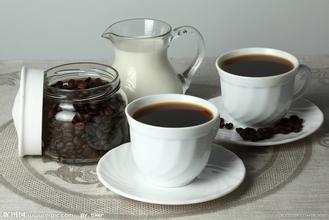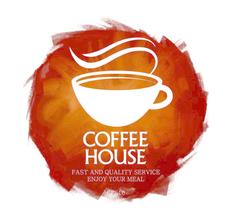The common sense of espresso that many people don't know.
1. When making ESPRESSO coffee, the most flavor will be extracted when the water temperature of 90.5 ℃ (195 °F) passes through the coffee powder. (the pressure of the water in the coffee machine must have 130PSI, that is, the pressure of 9 atmospheric pressure, in order to effectively and quickly extract the best taste of coffee.
2. When the water temperature is lower than 88.8 ℃, the coffee will have obvious sour taste, and the color is slightly lighter than the normal coffee.
3. When the water temperature is higher than 92.2 ℃, the coffee oil will be charred, causing the coffee to be scorched and bitter, and the oil slick on the coffee surface will have dark markings.
4. Espresso coffee is suitable for deep roasting beans, and the acidity of deep roasted beans is low.
5. Espresso coffee surface foam center, if the formation of a dime-shaped white area, indicating excessive extraction of caffeine and bitter oil.
6. The three largest coffee producing countries in the world are Brazil, Colombia and Indonesia.
7. The lower the milk fat of fresh milk, the easier it is to foam.
8. Experts know the degree of milk foam by experience or sound. People who are not familiar with it had better put a thermometer in a stainless steel cup. The ideal temperature for milk foaming is 140 degrees Fahrenheit.
9. When soaking milk, if the steam pipe is stretched too low against the bottom of the cup, there will be a noise like the roar of a jet, which says that you scalded the milk without forming foam.
10. If milk stains have been formed inside and outside the steam pipe, immerse the pipe in water, turn on the knob switch and spray, and the milk stains will soon dissolve and fall off.
Good ESPRESSO coffee should be strong but not too bitter.
There are more than 1200 chemicals in coffee beans.
A coffee tree produces about two thousand (cherry) coffee fruits every year.
About two thousand cherries can make one pound of coffee beans.
15. Each cherry contains two coffee beans. About 60 coffee beans can make a cup of ESPRESSO coffee, that is, about 60 coffee beans are ground and weigh 7 grams.
16. Among the various ways of brewing coffee, the faster the coffee is brewed, the finer the coffee must be ground.
Tea also contains caffeine, which is about half as much as coffee.
18. The most popular beverage in the world is water. Tea and coffee.
19. A traditional Italian biscuit, usually a twice-baked almond-flavored crispy cake, used specially for coffee dipped with coffee.
In Africa and the Middle East, local people often add spices to their coffee.
21. Moroccans like to add pepper to their coffee, while Ethiopians like to add a pinch of salt to their coffee.
Mexicans like to drink cinnamon in their coffee.
23. The French like their traditional milk coffee, or the same amount of coffee to heat milk.
24. Swiss and Germans like to mix the same amount of coffee with hot chocolate.
Belgium likes to melt chocolate in its coffee.
Austrians like to add whipped cream to their coffee.
27. Italians often like to drink lemons in their ESPRESSO coffee

Important Notice :
前街咖啡 FrontStreet Coffee has moved to new addredd:
FrontStreet Coffee Address: 315,Donghua East Road,GuangZhou
Tel:020 38364473
- Prev

20 ways of ingenious use of coffee grounds
1. Plant fertilizer spray mix half a cup of coffee grounds with warm water, put it in a spray can and spray it directly on the plant every day. 2 change the color of hydrangea flowers will change according to the acidity and alkalinity of the soil. Sprinkle coffee grounds on the soil and water them. This will make the soil PH value acidic, and the hydrangea flowers will change from pink to blue. (there is a kind of hydrangea at home.
- Next

A few cold knowledge points you need to know to open a coffee shop
Coffee grows on a tree and can live for 200 years. A coffee tree can live for more than 200 years. When it begins to sprout, the buds at the top are very lovely, but eventually it can grow into a thick plant and survive for two centuries. It is said that coffee was first discovered by shepherds. The most widely circulated
Related
- Beginners will see the "Coffee pull flower" guide!
- What is the difference between ice blog purified milk and ordinary milk coffee?
- Why is the Philippines the largest producer of crops in Liberia?
- For coffee extraction, should the fine powder be retained?
- How does extracted espresso fill pressed powder? How much strength does it take to press the powder?
- How to make jasmine cold extract coffee? Is the jasmine + latte good?
- Will this little toy really make the coffee taste better? How does Lily Drip affect coffee extraction?
- Will the action of slapping the filter cup also affect coffee extraction?
- What's the difference between powder-to-water ratio and powder-to-liquid ratio?
- What is the Ethiopian local species? What does it have to do with Heirloom native species?

